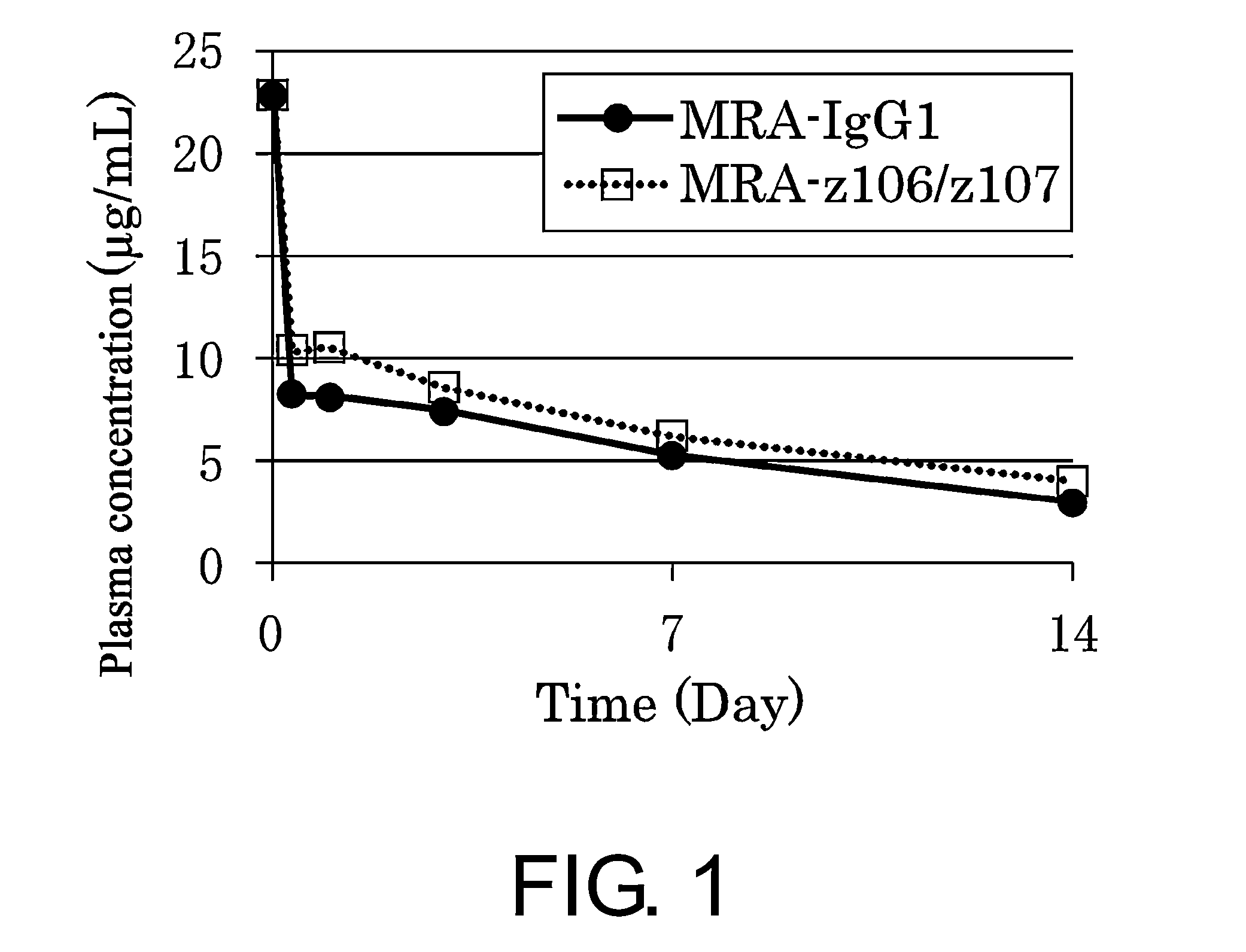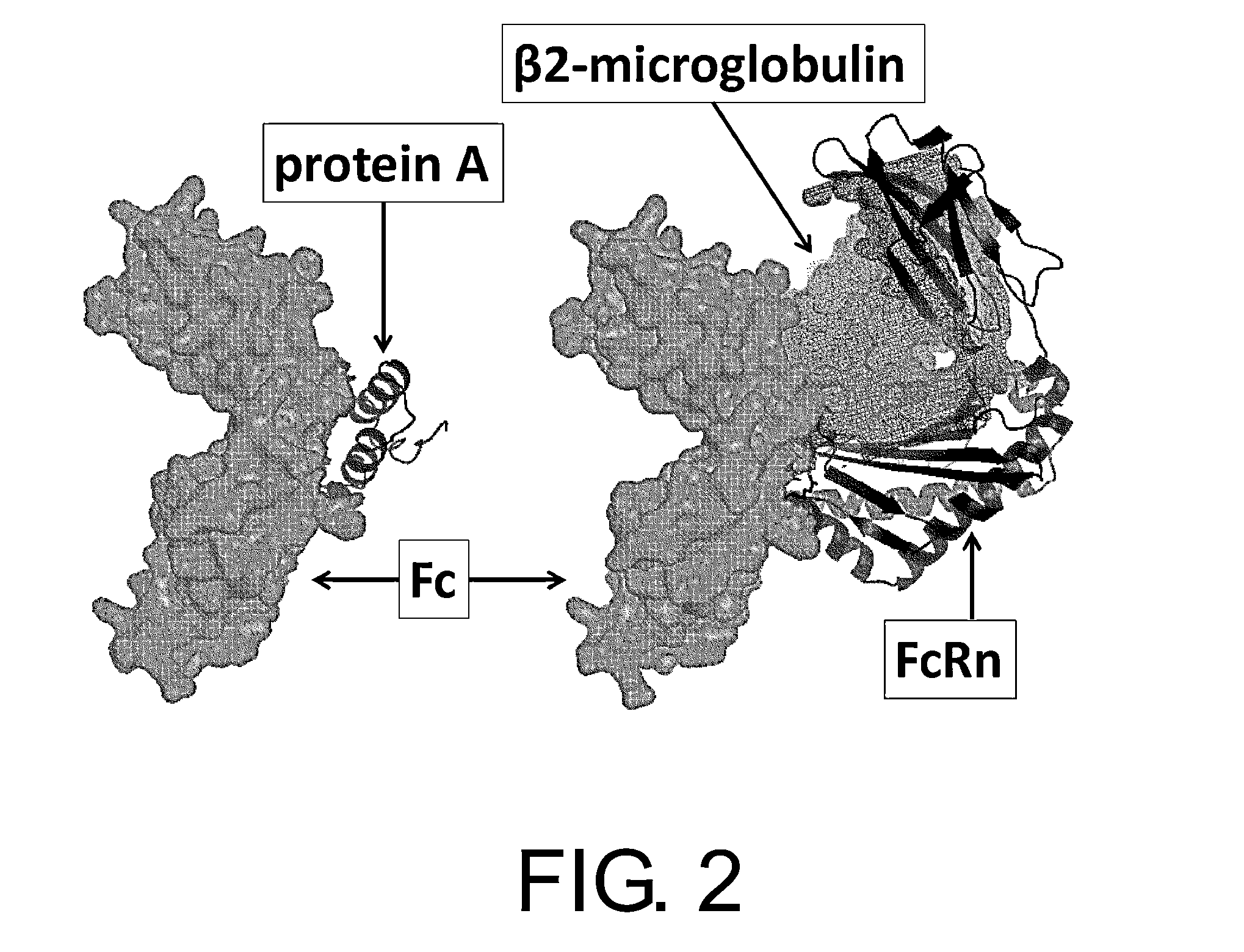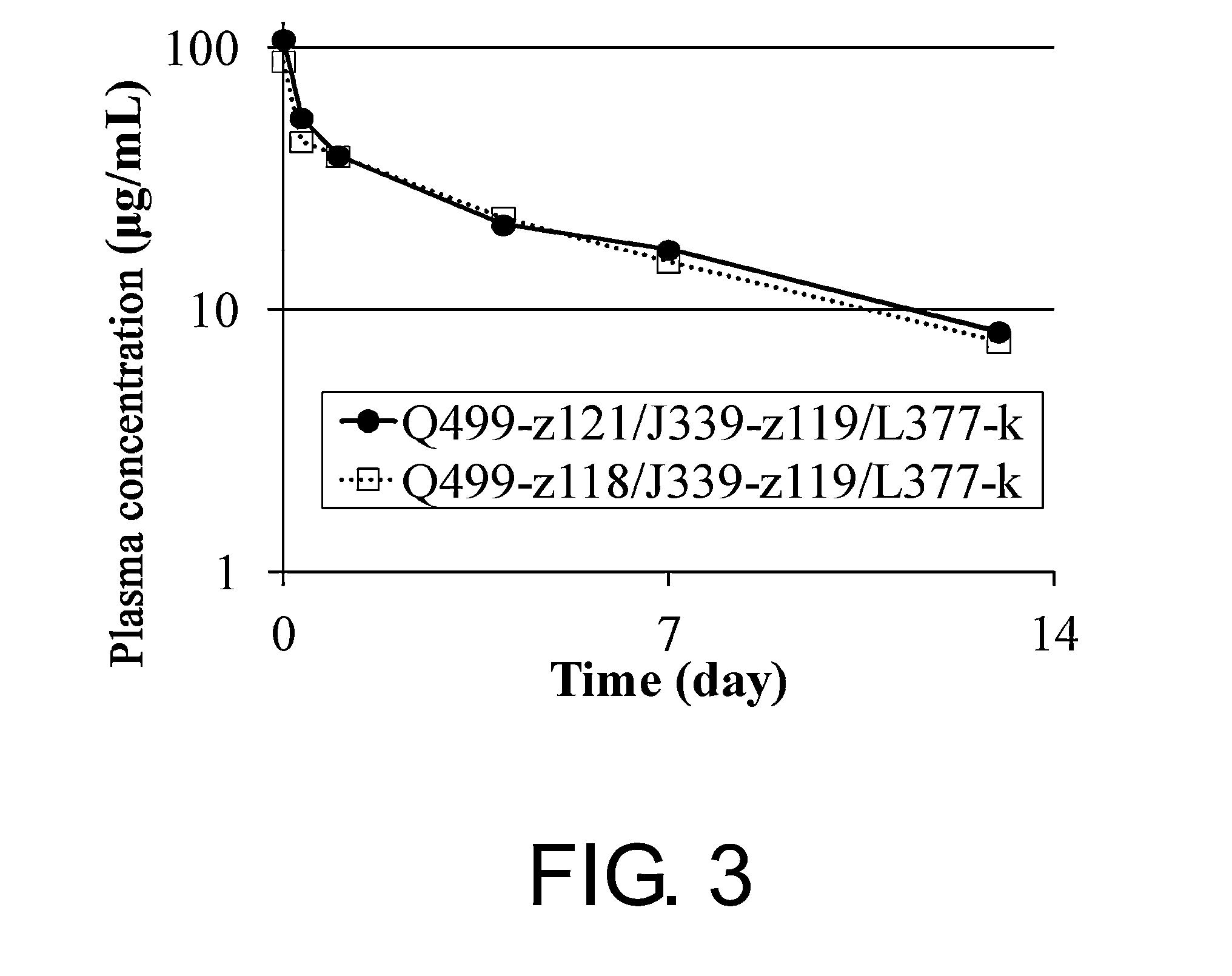Polypeptide modification method for purifying polypeptide multimers
a polypeptide multimer and polypeptide technology, applied in the direction of peptides, immunoglobulins against animals/humans, peptides, etc., can solve the problems of increasing production costs, inability to achieve highly pure bispecific antibody purification, and inefficient and difficult processes, etc., to achieve efficient purification or production, efficient purification
- Summary
- Abstract
- Description
- Claims
- Application Information
AI Technical Summary
Benefits of technology
Problems solved by technology
Method used
Image
Examples
example 1
Construction of Expression Vectors for Antibody Genes and Expression of Respective Antibodies
[0267]The antibody H chain variable regions used were:
Q153 (the H chain variable region of an anti-human F.IX antibody, SEQ ID NO: 1), Q407 (the H chain variable region of an anti-human F.IX antibody, SEQ ID NO: 2), J142 (the H chain variable region of an anti-human F.X antibody, SEQ ID NO: 3), J300 (the H chain variable region of an anti-human F.X antibody, SEQ ID NO: 4), and MRA-VH (the H chain variable region of an anti-human interleukin-6 receptor antibody, SEQ ID NO: 5).
[0268]The antibody L chain variable regions used were:
L180-k (an L chain common to an anti-human F.IX antibody and an anti-human F.X antibody, SEQ ID NO: 6), L210-k (an L chain common to an anti-human F.IX antibody / anti-human F.X antibody, SEQ ID NO: 7), and MRA-k (the L chain of an anti-human interleukin-6 receptor antibody, SEQ ID NO: 8).
[0269]The antibody H chain constant regions used were:
G4d (SEQ ID NO: 9), which wa...
example 2
Assessment of the Elution Conditions for Protein A Affinity Chromatography
[0279]Q153-G4d / J142-G4d / L180-k and Q153-G4d / J142-z72 / L180-k were expressed transiently, and the medium of the resulting FreeStyle293 cell culture (hereinafter abbreviated as CM) was used as a sample for assessing the elution conditions for protein A affinity chromatography. The CM samples were filtered through a filter with a pore size of 0.22 μm, and loaded onto an rProtein A Sepharose Fast Flow column (GE Healthcare) equilibrated with D-PBS. The column was subjected to washes 1 and 2 and elutions 1 to 5 in a stepwise manner as shown in Table 1. The volume of CM to be loaded onto the column was adjusted to 20 mg antibody / ml resin. Fractions eluted under each condition were collected, and the respective eluted fractions were analyzed by cation exchange chromatography to identify their components. To prepare controls, each CM was loaded onto rProtein G Sepharose Fast Flow resin (GE Healthcare). Samples purified...
example 3
Isolation and Purification of Heteromeric Antibodies by Protein A Chromatography
[0283]CM samples containing the following antibodies were used:
[0284]Q153-G4d / J142-G4d / L180-k
[0285]Q153-G4d / J142-z72 / L180-k
[0286]Q153-z7 / J142-z73 / L180-k
[0287]Q407-z106 / J300-z107 / L210-k
[0288]The CM samples were filtered through a filter with a pore size of 0.22 μm, and loaded onto an rProtein A Sepharose Fast Flow column (GE Healthcare) equilibrated with D-PBS. The column was subjected to washes 1 and 2 and elutions 1 and 2 as shown in Table 2 (except that Q407-z106 / J300-z107 / L210-k was subjected to elution 1 only). The elution conditions were determined based on the result described in Example 2. The volume of CM to be loaded onto the column was adjusted to 20 mg antibody / ml resin. Respective fractions eluted under each condition were collected and analyzed by cation exchange chromatography to identify their components. To prepare controls, each CM was loaded onto rProtein G Sepharose Fast Flow resin (GE...
PUM
| Property | Measurement | Unit |
|---|---|---|
| Fraction | aaaaa | aaaaa |
| Molar density | aaaaa | aaaaa |
| Molar density | aaaaa | aaaaa |
Abstract
Description
Claims
Application Information
 Login to View More
Login to View More - R&D
- Intellectual Property
- Life Sciences
- Materials
- Tech Scout
- Unparalleled Data Quality
- Higher Quality Content
- 60% Fewer Hallucinations
Browse by: Latest US Patents, China's latest patents, Technical Efficacy Thesaurus, Application Domain, Technology Topic, Popular Technical Reports.
© 2025 PatSnap. All rights reserved.Legal|Privacy policy|Modern Slavery Act Transparency Statement|Sitemap|About US| Contact US: help@patsnap.com



